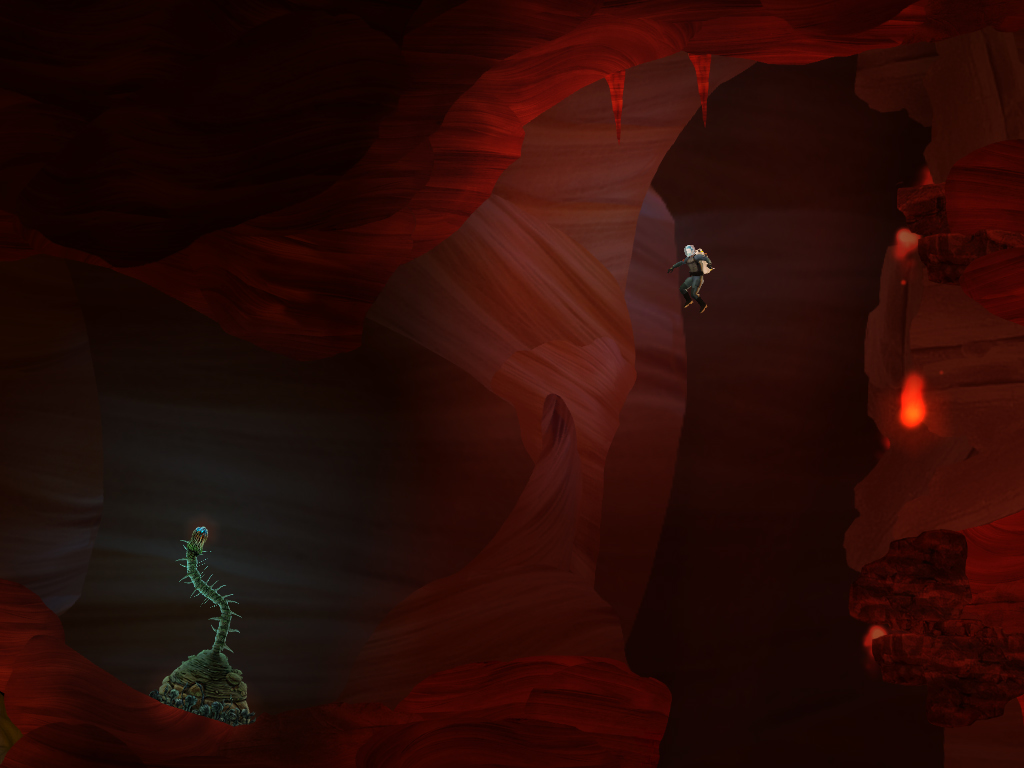
Waking Mars
Platform: iOS
Developer: Tiger Style Games
Release Date: 03/01/2012
Price: $4.99
Thousands of video games ask you to take life, but very few ask you to create it. Waking Mars, the new release from Spider: The Secret of Bryce Manor developer Tiger Style, is one of the rare creatures in the second camp. It’s also the rare mobile game that excels in all phases of its execution, elegantly integrating story, mechanics and aesthetics.
The developers’ own description of their game—“an action-gardening-adventure that takes place in the caves of Mars”—is pretty accurate. You control Liang, a space-suited, jet-packed researcher, as he explores the subterranean passages of Lethe Cavern. Turns out that not only is there life on Mars, but it’s everywhere. Giant plants called Zoa grow in patches of fertile ground throughout the caverns, and as you progress, Liang gathers information about each species with the help of fellow researcher Amani, back at base, and A.I. pal ART. Zoa grow in different conditions and interact in different ways; by planting seeds in various combinations, you learn about each Zoa’s nature and behavior, and the results are recorded in a research log, accessed through the game’s slick, intuitive interface. Liang’s log is also an endangered species—the rare codex that’s actually practical.

If Portal makes “surviving science” fun, Waking Mars makes “doing science” fun. That’s largely because of its focus on exploration. You guide Liang through gorgeously-rendered caverns with finger presses. Although this scheme can be a bit imprecise, leading to some frustration in navigation, imprecise movement is only fitting for an astronaut in a jetpack. And expert camera movement, particularly dynamic use of zoom, helps create a coherent sense of space.
In a clever twist on the gating formula of games like the Metroid series, Liang must create enough “biomass” (i.e., grow enough new life) in a given area to remove the Cerebranes blocking the exits. In many spaces, this requires careful, deliberate planning and adjustment, since Zoa have different biomass ratings. Subtly, each space becomes not just an area to explore, but a puzzle to be solved. Waking Mars’ pace, then, is much slower and more relaxed than a typical adventure game’s. That’s strangely refreshing, especially since it encourages you to slow down and enjoy the beautiful scenery and ambient soundtrack.
There is a dialogue-driven narrative that propels your progress in Waking Mars, as well as several optional objectives. But these are precisely tuned: they’re not so copious as to be meaningless, like in big open-world games, but not so urgent as to discourage exploration and experimentation—which are, after all, what science is all about. The use of stock photos for Liang and Amani is a bit jarring, but the characterization of Liang as an endearingly Spock-like professional largely compensates. And as the story quietly unfolds—as you, well, wake Mars—you may find yourself more emotionally invested than you’d thought. That’s the thing about making life instead of taking it: eventually, you remember how to care.